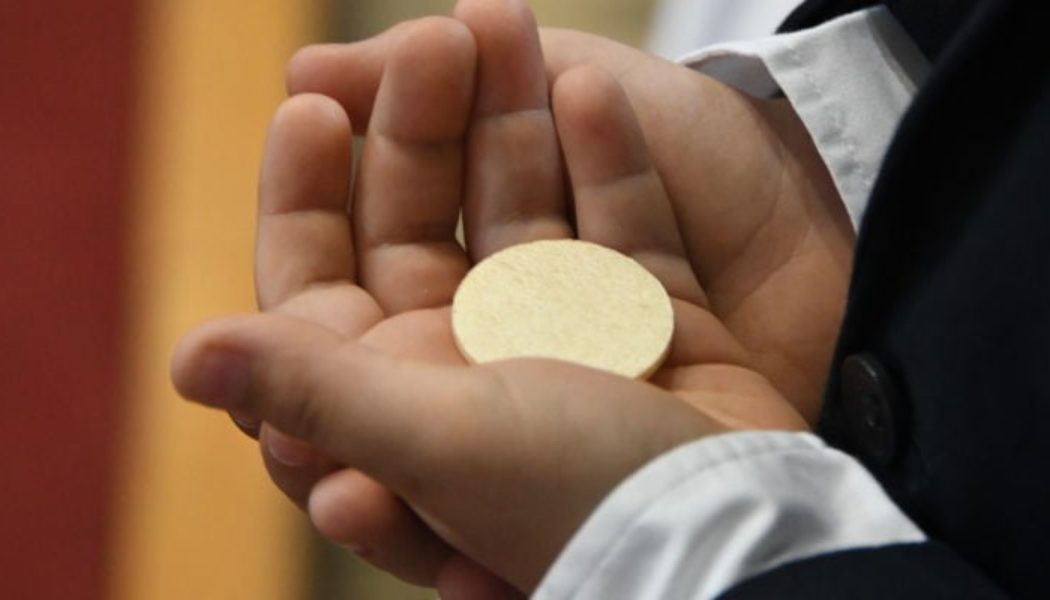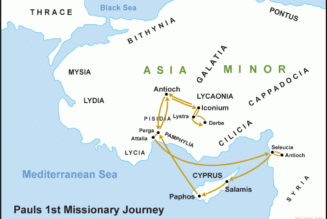
A recent article by Thomas Reese, S.J. for National Catholic Reporter has attracted attention. There’s a lot to respond to in Fr. Reese’s article, but I have a word limit, so I’ll keep it short.
Under the deliberately provocative title “The Eucharist is about more than the real presence,” Reese discusses what he thinks is wrong in the contemporary Church concerning the Eucharist. And about halfway through, he states:
Since my critics often accuse me of heresy, before I go further, let me affirm that I believe in the real presence of Christ in the Eucharist. I just don’t believe in transubstantiation because I don’t believe in prime matter, substantial forms and accidents that are part of Aristotelian metaphysics.
Thomas Aquinas used Aristotelianism, the avant-garde philosophy of his time, to explain the Eucharist to his generation. What worked in the 13th century will not work today. If he were alive today, he would not use Aristotelianism because nobody grasps it in the 21st century.
So, first, forget transubstantiation. Better to admit that Christ’s presence in the Eucharist is an unexplainable mystery that our little minds cannot comprehend.
Reese is correct that Aristotelianism was an avant-garde philosophy in the time of Aquinas. Except for Aristotle’s work on logic, the rest of his philosophy had been unavailable in the Latin-speaking West for centuries, and it was just before and during Aquinas’s time that translations of most of Aristotle’s works were becoming available.
The major figure in synthesizing Aristotelian and Christian thought was Aquinas’s mentor, Albert the Great (c. 1200-1280), and the new ideas were considered quite daring. In 1210, 1270, and 1277, ecclesiastical authorities in Paris prohibited the teaching of various ideas connected with Aristotle’s thought, and Albert himself found it expedient to state, “I expound, I do not endorse, Aristotle.”
Aquinas’s own synthesis of Christian and Aristotelian thought was viewed with considerable suspicion, and some of the Condemnations of 1277 were directed at Aquinas’s ideas. Particularly suspect were Aristotle’s physics and metaphysics.
But what does any of this have to do with transubstantiation?
From what Reese says, you might suspect that Thomas Aquinas (1225-1274) came up with transubstantiation, that the concept is inextricably bound up with Aristotle’s thought, and that it’s purely optional for Catholics. However, none of these things is true.
In the first place, the term transubstantiation had been around for quite some time before Aquinas. Its first recorded use was by Hildebert of Tours, who used it around 1079—two centuries before Aquinas. The term was regarded as an apt one for expressing what people believed, and it quickly spread among theologians.
It appears—and is endorsed—in a letter of Pope Innocent III from 1202 (DH 784), and in 1215, the ecumenical council of Lateran IV taught that Christ’s “body and blood are truly contained in the sacrament of the altar under the appearances of bread and wine, the bread being transubstantiated into the body by the divine power and the wine into the blood” (DH 802).
So transubstantiation was not the brainchild of Thomas Aquinas. What about it being inextricably linked to Aristotle’s thought?
That the term was proposed before the major translation of Aristotle’s writings into Latin and the integration of Aristotelian and Christian thought should be a big clue that there’s no essential connection between the two.
So is the fact that the term had been widely adopted—including by a pope and an ecumenical council!—during the period when Aristotelianism, and especially its physics and metaphysics, were viewed with suspicion.
The term transubstantiation itself is not Aristotelian, and Aristotle did not use it. The word is Latin rather than Greek, and it comes from perfectly common Latin roots: trans, which means across or beyond, and substantia, which means substance. Any Latin speaker of the day would naturally understand it to mean a change of one substance or reality into another, as you can tell from the context in which Lateran IV used it.
Neither do we find distinctly Aristotelian terms like prime matter, substantial form, or even accidents in the Church’s articulation of transubstantiation. When the Council of Trent met, it issued the following definition:
If anyone says that in the most holy sacrament of the Eucharist the substance of bread and wine remains together with the body and blood of our Lord Jesus Christ and denies that wonderful and unique change of the whole substance of the bread into his body and of the whole substance of the wine into his blood while only the species of bread and wine remain, a change which the Catholic Church very fittingly calls transubstantiation, let him be anathema (Decree on the Sacrament of the Eucharist, can. 2; DH 1652).
There’s nothing distinctly Aristotelian in that. The Council even avoids the Aristotelian term accidents and uses the term species—which means appearances—instead. The council thus articulated the faith of the Church without endorsing any particular philosophical school of thought.
I don’t know how much catechesis Reese has done in his career, but you don’t have to sit down and give a person a mini-course in Aristotelianism—or any philosophical system—to explain transubstantiation. It’s not a familiar term outside Catholic circles, but all you have to say is, “The bread and wine become Jesus. After the consecration, bread and wine aren’t there anymore. Jesus is present under the appearances of bread and wine.”
This understanding was present in the Church’s faith before the term transubstantiation was coined. Indeed, it’s why the term was coined.
Reese’s comments about transubstantiation, Aquinas, and Aristotle are thus misinformed and misdirected, but he raises the question of whether he can be accused of heresy and professes his faith in the real presence as proof that he is not a heretic. It’s good that he believes in the real presence, but is this sufficient to avoid heresy?
The charge of heresy is a very serious one and should be made only in the gravest circumstances. It is defined as follows:
Heresy is the obstinate denial or obstinate doubt after the reception of baptism of some truth which is to be believed by divine and Catholic faith (CIC 751).
A “truth which is to be believed with divine and Catholic faith” is another way of saying a dogma—that is, a truth that has been infallibly defined by the Magisterium to be divinely revealed. Dogmas are a subset of other infallible teachings, which may or may not be divinely revealed.
It is commonly held that Trent’s canon (above) contains two infallible definitions: first, that the whole substance of bread and wine is changed into Christ’s body and blood so that bread and wine do not remain and, second, that this change is fittingly called transubstantiation.
The term transubstantiation was coined in the 1000s, so it is not part of the deposit of faith and not divinely revealed. Reese would not be a heretic for denying this term.
But in rejecting transubstantiation, Reese said that “Christ’s presence in the Eucharist is an unexplainable mystery.” On its face, that appears to be a doubt of (a refusal to believe) the explanation provided by Trent—that the whole substance of bread and wine are changed into the whole substance of Christ’s body and blood.
Reese thus should clarify whether he actually accepts this change, which is divinely revealed and was made a dogma by Trent.
Doubting this dogma obstinately would make Reese guilty of heresy—and that’s for the competent ecclesial authorities to judge, not me. I thus am not in a position to accuse him of heresy, but based on what he has said, he is dancing on the edge of it.




![Los Angeles DA George Gascon violates key policy in Bishop O’Connell murder case; “doesn’t know basic ethical rules or doesn’t care” [warning: autoplay video]…](https://salvationprosperity.net/wp-content/uploads/2023/03/los-angeles-da-george-gascon-violates-key-policy-in-bishop-oconnell-murder-case-doesnt-know-basic-ethical-rules-or-doesnt-care-warning-autoplay-video-327x219.png)



